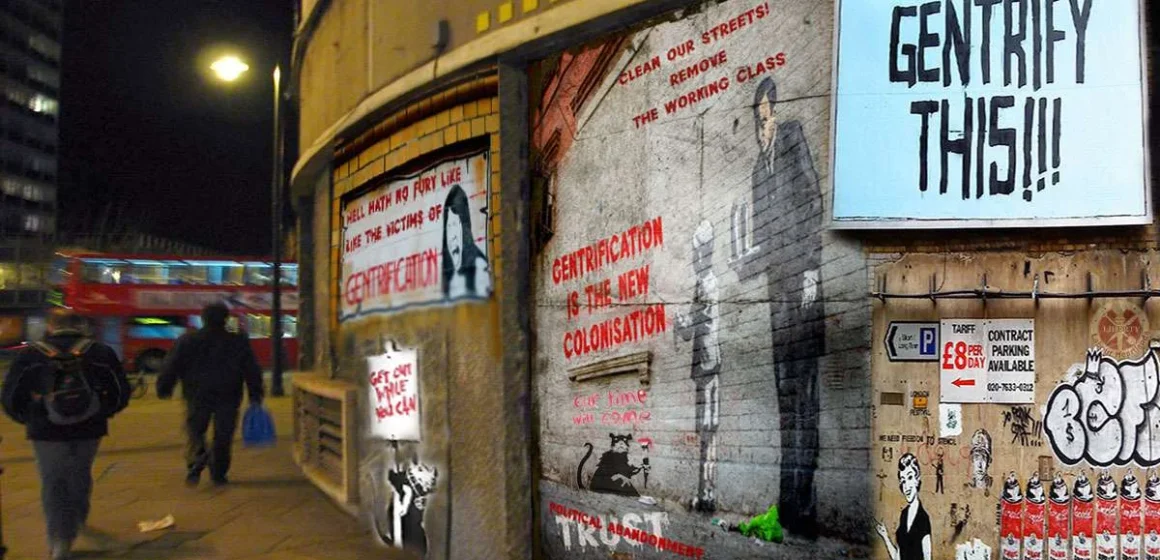London is a big, busy city full of life and diversity. But some people say it is changing. They believe gentrification might be turning parts of London into ghost towns. Gentrification happens when wealthier people move into poorer areas, making them expensive. This can push out long-time residents and change the neighbourhoods.
Is this really true? Is London slowly losing its charm, or is it just transforming? Let’s take a closer look at what is happening.
Understanding Gentrification in London
Gentrification can sound like a big, complicated word. But it actually means something simple. It happens when people with higher incomes move into areas where houses and rents are cheaper. When these new people arrive, fancy shops and cafes can open up. Old buildings might get replaced with shiny new ones.
But there is also a downside. Prices go up. People who have lived there for a long time may no longer afford to stay. This especially affects families, workers, and people with lower incomes.
Gentrification’s Impact on Housing in London
One big problem with gentrification is housing. House prices and rents in gentrified areas have skyrocketed. This makes it very hard for many people to stay. For example, flats that used to cost £500 per month may now cost £1,000 or more.
Even “affordable housing” is not truly affordable for most Londoners. The government calls homes affordable if they cost 80% of the market rate. But even that is still too expensive for many families or young workers.
Social housing, which offered cheaper alternatives, is also disappearing in some areas. For instance, the Heygate Estate in Elephant and Castle was replaced by luxury flats. These new homes cost way too much for the people who used to live there.

Who’s Affected by Gentrification in London?
Gentrification changes who stays in the city. Families with children are leaving because they cannot afford to live here anymore. This means schools are closing since there are fewer kids to fill classrooms.
At the same time, neighborhoods are becoming less diverse. For example, in some gentrified areas, there are now fewer Black residents. Couples without children and people working in high-paying jobs are moving in instead.
The result? Parks feel quieter, schools close down, and many old community spaces disappear. These changes make some areas feel less lively and welcoming.
Pros and Cons of London’s Gentrification
Gentrification is not all bad. It can bring some positive changes. Streets may become cleaner and safer. New parks, cafes, and shops can make areas look fresh and exciting. For example, parts of London like Shoreditch and Peckham now have trendy shops and art spaces.
However, not everyone benefits from these improvements. Local people who made these places special often must leave. They lose their homes and their communities. The new stores and cafes may be too expensive for them to enjoy. This makes some people feel like the city is no longer for them.

Is London’s Gentrification Turning It into a Ghost Town?
Some areas of London are starting to feel quiet and empty. Places that used to have lots of kids playing now have fewer families. School playgrounds are empty because families move away. Even some schools themselves are closing.
But these areas are not completely deserted. New people do move in. They just bring a different kind of energy. Instead of families, you might see more professionals and couples without children.
How Gentrification Pushes People Out of London
Many families and young people are moving to places outside London. Cities like Brighton and seaside towns like Deal in Kent are becoming more popular. But as more people move there, house prices in these areas are also going up.
This is creating new problems. Londoners, pushed out by high costs, are making places outside the city less affordable too. It’s like a ripple effect that spreads the problems even further.
What Can Be Done About Gentrification in London?
People want London to stay a place where everyone can live, not just the rich. To make this happen, there are solutions. The government needs to build more affordable homes. They should make social housing available for families and young people. They also need rules to keep rents under control.
Young people can also play a role. If you care about this, you can vote for leaders who focus on housing issues. You can also join campaigns for fair housing in London. Every voice matters in shaping the city’s future.
However, calling London a “ghost town” might not tell the whole story. The city is not dying, but it is transforming. It’s important to make sure these changes benefit everyone, not just a few.
If we work together, we can help keep London diverse, lively, and welcoming for all.
Thank you for reading, click the link to read more of our Opinion Articles




Leave a Reply
You must be logged in to post a comment.